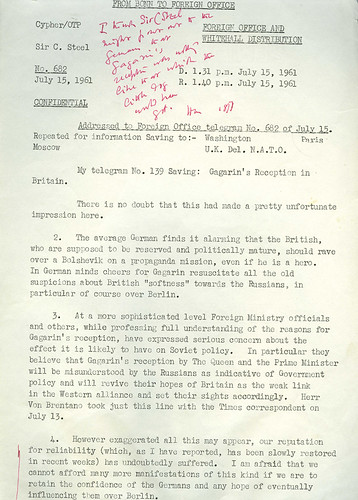I know we’ve only just met but I want you to do me a favour. I want you to lean over and pick up a sheet of paper. Done? Excellent! Now write something on it. Great! Now put it in a box, label it and put the box on the shelf for twenty to thirty years. As long as it hasn’t rained too much you should be able to pick up the box, take the paper out and still be able to read it. A little simplistic but you’ve just taken your first steps to managing and preserving the paper record. Congratulations.
OK, now I want you to lean over and pick up this blog post so we can keep that for thirty yea… What do you mean you can’t?
It may have been only forty-eight years ago but the Canadian communication theorist Marshall McLuhan, who provided my title, really nailed the dilemma facing the digital records managers and archivists of today. We can do paper. We have over two thousand years of experience in managing paper, more if you include parchment and papyrus. And bar the odd war, fire and flood and some bad decision making as to what’s worth keeping, we’ve done an excellent job of it. We understand the physical nature of paper and we’ve developed the skills and crafts and criteria to preserve this format for so many generations that we’ve set the bar pretty high for expectations of digital longevity.
But this; this post isn’t physical. It’s a complex stream of ones and zeroes that sits as random points, unevenly distributed, on a spinning magnetic disc. I’ve tried to find an image of digital bits on a disc and I can’t, possibly because it’s impossible. No problems getting hold of an image of a physical document though. The rendering of the bits as human readable content (this post) requires an even more complex interplay of wires, circuits, processors, operating systems and software (to name but a few components). A glitch in any one of these could render this post lost to you. And that would be a shame I’m sure! Ensuring the long-term availability of these words requires, to varying degrees, the management of all these components.
Every year someone comes up with a new way of visualising the amount of digital information in the world which either stretches into the far reaches of the galaxy or outstrips the number of grains of sand on the planet or starts exceeding Avogadro’s constant at which point we become horribly lost and quite upset. Essentially what they’re trying to say is that the rate of change is fast and there’s lots of it. My favourite example is that the modern ‘smart’ phone contains more processing power than the whole of NASA in 1969 and they put two men on the moon with that!
Back in the days BD (before digital) records were physical and static. Now we create video files; three dimensional building plans; linked datasets; websites that contain interactive material: games, videos, comments, content embedded from or shared with other websites. How do we determine what’s important in this myriad of virtual forms and formats: the flat content of the text or the interactive dynamic nature of the website with the videos and user comments and embedded Twitter feed? Datasets are fantastic but useless if they can’t be queried and that requires further technology to be able to do so. Videos require players. The message, the content, is now so embedded within the medium that they are indeed one and the same. And if we are to ensure that we can preserve the message, we need to ensure we are learning how to preserve the medium. A medium which is both shrinking in physical size whilst expanding in scope, which is pushing the boundaries of how content can be presented, understood and merged with other content types to create entirely new information types that we now take for granted. Let’s have one final analogy. In the paper world you have one complete object to manage. In the digital world, the words, the ink and the paper are essentially separated from each other.
I love the digital age. It offers us untold wealth and wraps it up in a medium that essentially does not exist and therefore is inherently not built to last. These are the challenges that I’ll be troubling you with from time to time. Next time we’ll dig a little deeper and examine the importance of remembering to shape our tools.

I just found your website through Geneabloggers. Welcome to Geneabloggers.
Regards, Jim
Genealogy Blog at Hidden
Genealogy Nuggets